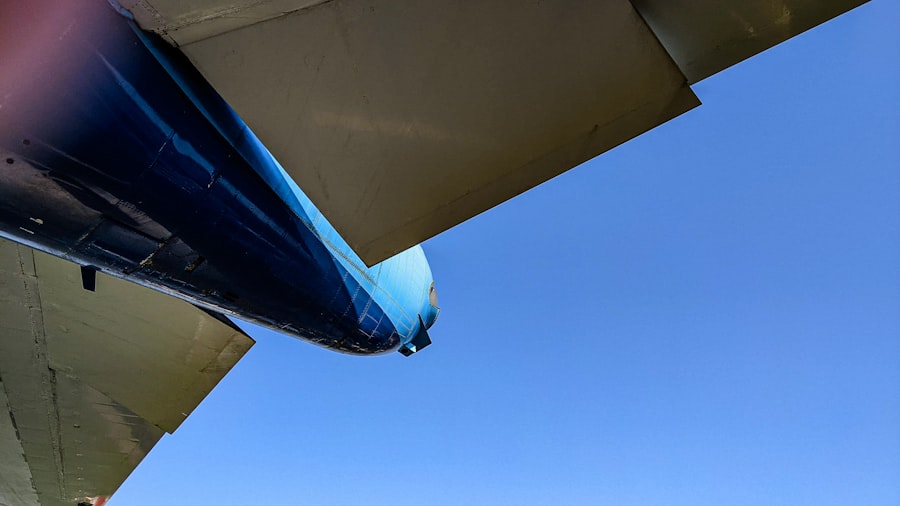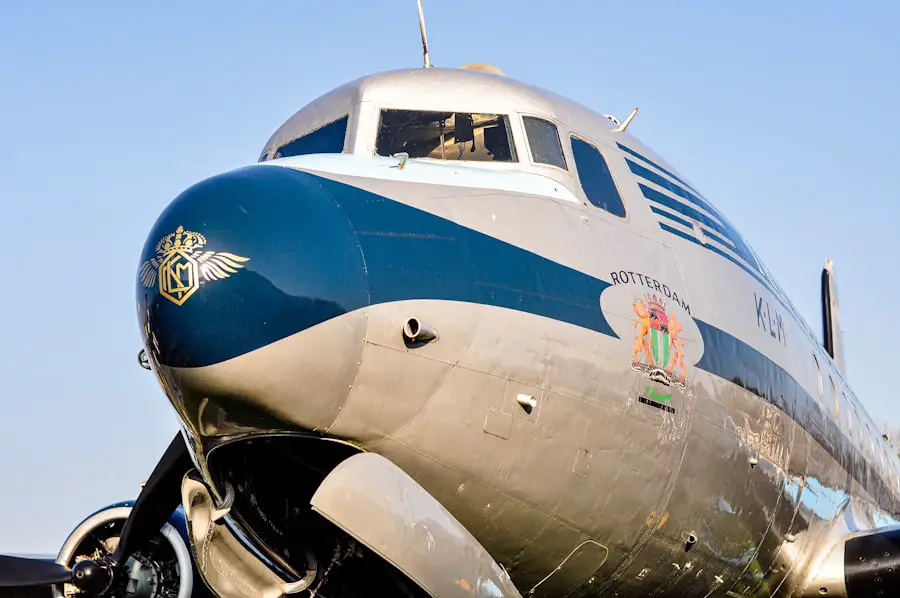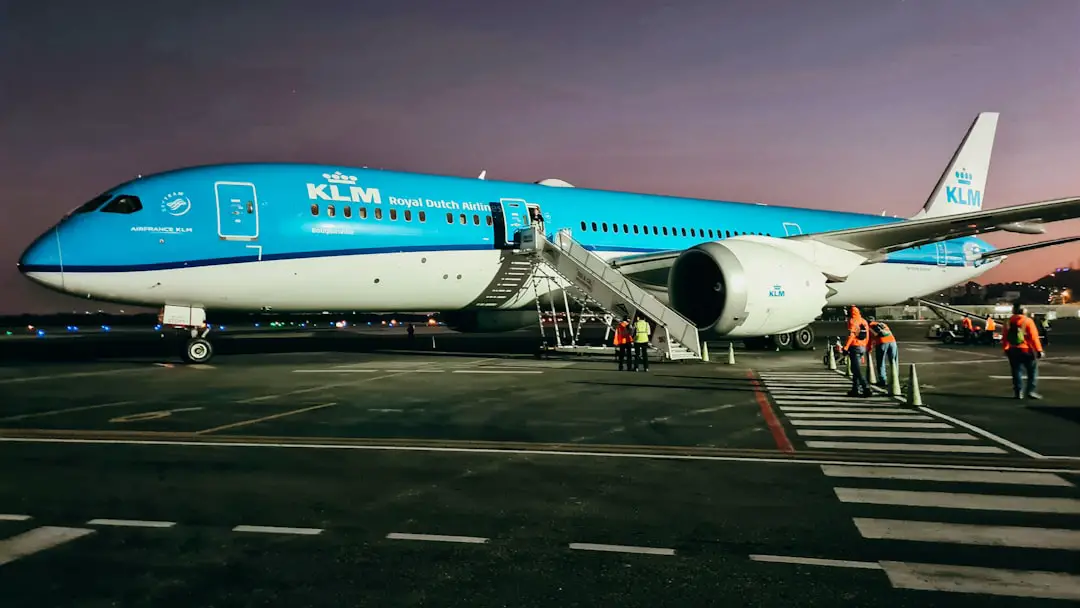KLM Royal Dutch Airlines, established in 1919, holds the distinction of being the oldest airline still operating under its original name. Headquartered in Amstelveen, near Amsterdam, KLM has built a reputation for reliability and service excellence over more than a century of aviation history. As a member of the Air France-KLM Group, it operates an extensive network of international and domestic flights, connecting passengers to over 160 destinations across the globe.
The airline’s commitment to innovation and customer satisfaction has made it a prominent player in the competitive landscape of global aviation. KLM’s fleet consists of a diverse range of aircraft, including the Boeing 787 Dreamliner and the Airbus A350, which are known for their fuel efficiency and passenger comfort. The airline has consistently embraced technological advancements, integrating modern systems to enhance operational efficiency and improve the travel experience.
With a focus on sustainability, KLM has also initiated various programs aimed at reducing its carbon footprint, reflecting a growing awareness of environmental responsibility within the aviation industry. As travelers increasingly prioritize safety and reliability, understanding KLM’s safety records and protocols becomes essential for discerning passengers.
Key Takeaways
- KLM, the flag carrier airline of the Netherlands, has a long history and is known for its commitment to safety and reliability.
- KLM has a strong safety record, with no fatal accidents since 1994 and a high safety rating from various aviation authorities.
- The airline has implemented rigorous safety measures and protocols, including regular aircraft maintenance and crew training, to ensure the safety of its passengers and crew.
- KLM’s approach to pilot training and maintenance emphasizes continuous improvement and adherence to international safety standards.
- In response to incidents, KLM has made safety improvements and continues to prioritize the safety and well-being of its passengers.
Safety Records of KLM
KLM’s safety record is a testament to its long-standing commitment to aviation safety. Over the decades, the airline has maintained a relatively low accident rate compared to industry standards. According to the Aviation Safety Network, KLM has experienced a total of 16 hull-loss accidents since its inception, with the majority occurring in the early years of operation.
Notably, the airline has not had a fatal accident involving a passenger flight since 2000, which speaks volumes about its dedication to maintaining high safety standards. The airline’s safety history is marked by significant incidents that have shaped its operational protocols. One of the most notable events was the tragic collision of KLM Flight 4805 and Pan Am Flight 1736 in 1977 at Los Rodeos Airport in Tenerife, Spain.
This incident remains one of the deadliest aviation disasters in history, resulting in 583 fatalities. In response to this catastrophe, KLM implemented rigorous changes in cockpit communication protocols and crew resource management training, which have since become industry standards. Such historical events have not only influenced KLM’s internal policies but have also contributed to broader safety improvements across the aviation sector.
Safety Measures and Protocols in Place

KLM employs a comprehensive array of safety measures and protocols designed to ensure the well-being of its passengers and crew. The airline adheres to stringent regulations set forth by international aviation authorities, including the International Civil Aviation Organization (ICAO) and the European Union Aviation Safety Agency (EASA). These regulations encompass various aspects of flight operations, from aircraft maintenance to crew training and emergency procedures.
One of the key components of KLM’s safety framework is its commitment to regular aircraft maintenance and inspections. The airline operates its own maintenance organization, KLM Engineering & Maintenance, which is responsible for ensuring that all aircraft meet or exceed safety standards. This division conducts routine checks, overhauls, and modifications on KLM’s fleet, utilizing advanced technology and skilled personnel to maintain operational integrity.
Additionally, KLM employs a robust reporting system that encourages crew members to report any safety concerns or irregularities without fear of reprisal, fostering a culture of transparency and continuous improvement.
KLM’s Approach to Pilot Training and Maintenance
| Training Program | Metrics |
|---|---|
| Pilot Training | Number of hours of simulator training |
| Maintenance Training | Percentage of technicians certified in specific aircraft models |
| Training Facilities | Number of full-flight simulators available |
| Training Curriculum | Number of recurrent training sessions per year |
KLM places significant emphasis on pilot training as a cornerstone of its safety culture. The airline’s training programs are designed to equip pilots with the skills necessary to handle various flight scenarios, including emergency situations. KLM utilizes state-of-the-art flight simulators that replicate real-world conditions, allowing pilots to practice their responses to potential challenges in a controlled environment.
This hands-on approach ensures that pilots are well-prepared for any situation they may encounter during actual flights. In addition to technical training, KLM emphasizes crew resource management (CRM), which focuses on effective communication and teamwork among flight crews. This training is crucial for enhancing decision-making processes during flights and ensuring that all crew members are aligned in their responses to emergencies.
By fostering an environment where pilots can collaborate effectively, KLM enhances overall flight safety and reduces the likelihood of human error. Maintenance practices at KLM are equally rigorous. The airline adheres to a strict maintenance schedule that includes daily inspections, routine checks, and comprehensive overhauls at regular intervals.
KLM’s engineering team employs advanced diagnostic tools to monitor aircraft systems continuously, allowing for proactive identification of potential issues before they escalate into serious problems. This meticulous attention to detail ensures that every aircraft is in optimal condition before it takes to the skies.
Incident Response and Safety Improvements
KLM’s approach to incident response is characterized by thorough investigation and analysis following any safety-related event. The airline collaborates with national and international aviation authorities to conduct detailed investigations into incidents or accidents involving its aircraft. These investigations aim not only to determine the root causes but also to identify areas for improvement within the airline’s operations.
Following an incident, KLM implements corrective actions based on findings from investigations. This may involve revising operational procedures, enhancing training programs, or upgrading equipment. For instance, after analyzing data from previous incidents, KLM has made significant investments in technology that enhances situational awareness for pilots during takeoff and landing phases.
Such proactive measures demonstrate KLM’s commitment to learning from past experiences and continuously improving its safety protocols. Moreover, KLM actively participates in industry-wide safety initiatives aimed at sharing best practices and lessons learned from incidents across different airlines. By engaging with organizations such as the International Air Transport Association (IATA) and the Flight Safety Foundation, KLM contributes to a collective effort to enhance aviation safety on a global scale.
Comparison with Other Airlines

When evaluating KLM’s safety performance, it is essential to compare it with other major airlines in the industry. According to various safety rankings published by aviation safety organizations, KLM consistently ranks favorably among its peers. For instance, organizations like AirlineRatings.com assess airlines based on multiple criteria, including fleet age, incident history, and operational excellence.
In comparison with other legacy carriers such as British Airways or Lufthansa, KLM’s accident rate remains competitive. While no airline is entirely free from incidents, KLM’s proactive approach to safety management sets it apart from some competitors who may not prioritize similar levels of transparency or continuous improvement. Furthermore, airlines that have faced significant incidents in recent years may experience a decline in passenger confidence; however, KLM’s long-standing commitment to safety has helped it maintain a positive reputation among travelers.
Additionally, low-cost carriers often face scrutiny regarding their safety practices due to their focus on cost-cutting measures. While many budget airlines operate safely within regulatory frameworks, KLM’s comprehensive training programs and maintenance protocols provide an added layer of assurance for passengers who prioritize safety over price when choosing an airline.
Passenger Feedback and Confidence in KLM
Passenger feedback plays a crucial role in shaping perceptions of an airline’s safety culture. Surveys conducted by various travel organizations often reveal that travelers prioritize safety as one of their top concerns when selecting an airline. In this regard, KLM has garnered positive feedback from passengers regarding its commitment to safety and service quality.
Many travelers appreciate KLM’s transparent communication regarding safety measures implemented during flights, especially in light of recent global health concerns. The airline has taken proactive steps to inform passengers about enhanced cleaning protocols and social distancing measures during boarding processes. Such transparency fosters trust among passengers who may be apprehensive about flying during uncertain times.
Moreover, KLM’s reputation for reliability extends beyond just safety; it encompasses overall customer experience as well. Passengers frequently commend the airline for its attentive cabin crew and well-maintained aircraft. Positive experiences contribute significantly to passenger confidence in KLM as a safe choice for air travel.
Is KLM a Safe Airline?
In assessing whether KLM is a safe airline, it becomes evident that its long-standing commitment to aviation safety is deeply ingrained in its operational philosophy. With a solid track record free from fatal accidents over the past two decades and an unwavering focus on continuous improvement through rigorous training and maintenance protocols, KLM stands out as a leader in aviation safety. The airline’s proactive approach to incident response further underscores its dedication to learning from past experiences while implementing necessary changes for future operations.
Coupled with favorable comparisons against other airlines and positive passenger feedback regarding safety measures, it is clear that KLM prioritizes the well-being of its passengers above all else. Ultimately, for travelers seeking assurance when flying, KLM’s comprehensive safety measures and commitment to excellence make it a compelling choice within the global aviation landscape.
If you are considering flying with KLM, you may be interested in reading an article about the best hiking backpack for a multi-day trek. Having the right gear for your adventure is essential, just like choosing a safe airline. Check out this article here to ensure you are well-prepared for your next journey.
FAQs
Is KLM a safe airline?
Yes, KLM (Koninklijke Luchtvaart Maatschappij) is considered a safe airline. It has a strong safety record and adheres to strict safety regulations.
What safety measures does KLM have in place?
KLM has a comprehensive safety management system in place, which includes regular maintenance of its aircraft, thorough training for its pilots and crew, and adherence to international safety standards.
Has KLM had any major safety incidents in the past?
Like any airline, KLM has had safety incidents in the past, but it has a strong safety record overall. The airline continuously works to improve its safety measures and learn from any incidents that occur.
How does KLM compare to other airlines in terms of safety?
KLM is considered to be on par with other major international airlines in terms of safety. It is a member of the SkyTeam alliance and adheres to the safety standards set by the International Air Transport Association (IATA).
Where can I find more information about KLM’s safety record?
You can find more information about KLM’s safety record on the airline’s official website, as well as through independent aviation safety organizations and government regulatory agencies.
